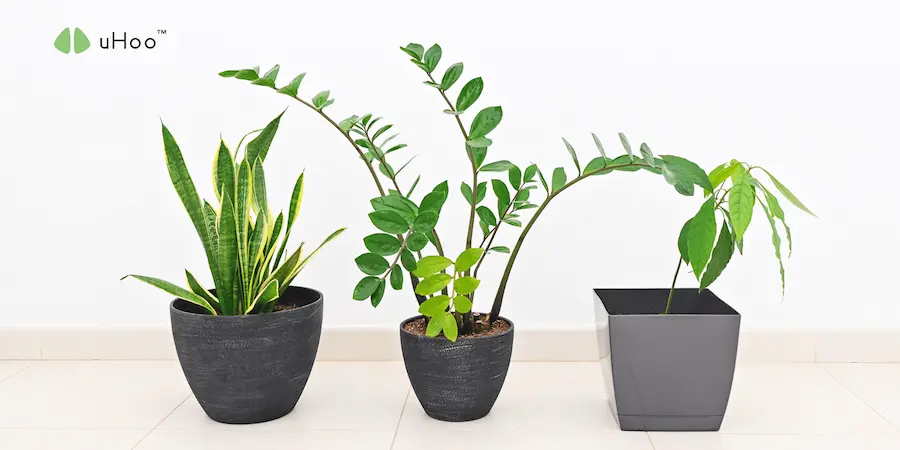Imagine stepping into your home, taking a deep breath, and feeling a sense of calm and freshness. In a bustling city, where outside air can sometimes feel heavy, creating this “home oasis” isn’t just a dream – it’s achievable, and surprisingly easy, with the help of indoor plants.
If you’ve never owned a plant before, the idea of keeping something alive might seem daunting. But here’s a secret: many indoor plants are incredibly forgiving and practically thrive on neglect! They’re not just pretty faces; they’re nature’s silent heroes, working to filter out invisible pollutants that can come from everyday items like cleaning supplies, furniture, and even your clothes. Ready to transform your space and breathe easier? This beginner’s guide is for you!
Why Choose Indoor Plants for Air?
Our homes can accumulate Volatile Organic Compounds (VOCs) – gases released from many common household items. These can contribute to headaches, dizziness, and respiratory irritation. While a HEPA filter is fantastic for particles, plants are superstars at absorbing these gaseous VOCs and converting carbon dioxide into life-giving oxygen. They also add a touch of living beauty and can boost your mood!
Let’s meet some super easy-to-care-for indoor plants perfect for your first foray into indoor gardening:
1. The Indestructible: Snake Plant (Sansevieria trifasciata)
- Why it’s your new best friend: If you think you have a “black thumb,” start here. The Snake Plant is legendary for being almost impossible to kill. It’s incredibly tolerant and fantastic at removing formaldehyde, benzene, and trichloroethylene – common chemicals found in detergents, paints, and furniture. Bonus: it produces oxygen at night, making it perfect for your bedroom!
- Simple Care for Beginners:
- Light: Almost anything! It tolerates very low light, but will thrive in medium to bright indirect light. Avoid direct scorching sun.
- Water: This is where beginners often go wrong. Less is more! Let the soil dry out completely between waterings. For a humid climate, this might mean watering only once every 2-4 weeks, or even less in cooler months. Stick your finger into the soil up to your knuckle – if it’s damp, wait.
- Humidity: Doesn’t care. Natural humidity is fine.
- Beginner Tip: Overwatering is the biggest killer. When in doubt, don’t water!
2. The Elegant & Easy: Peace Lily (Spathiphyllum)
- Why it’s your new best friend: With its beautiful dark green leaves and elegant white “flowers” (which are actually modified leaves called spathes), the Peace Lily adds sophistication while working hard. It’s excellent at filtering formaldehyde, benzene, trichloroethylene, and even ammonia. It can also help reduce airborne mold spores, a plus in humid environments.
- Simple Care for Beginners:
- Light: Prefers medium to low indirect light. Direct sunlight will scorch its leaves. A spot near a window that doesn’t get harsh afternoon sun is ideal.
- Water: Likes consistently moist soil, but never soggy. Water when the top inch of soil feels dry to the touch. If it starts to droop dramatically, it’s telling you it’s thirsty! It usually perks right back up after watering.
- Humidity: Loves it!
- Beginner Tip: It’s very dramatic when it needs water (leaves droop), but don’t panic. It’s just letting you know.
3. The Dangling Delight: Spider Plant (Chlorophytum comosum)
- Why it’s your new best friend: This classic houseplant is famous for being incredibly easy to grow and for producing “spiderettes” – little baby plants that dangle from the mother plant, making it perfect for hanging baskets. It’s a top performer for removing formaldehyde, xylene, and carbon monoxide.
- Simple Care for Beginners:
- Light: Adaptable! It can handle lower light, but prefers bright, indirect light for best growth and to produce those fun “spiderettes.”
- Water: Water thoroughly when the top inch or two of soil feels dry. It’s more forgiving than some, but don’t let it sit in standing water.
- Humidity: Tolerates average room humidity. Natural humidity is just fine.
- Beginner Tip: Those little spiderettes are easy to root! Just snip them off and place them in a glass of water until roots form, then plant them in soil for more indoor plants!
Getting Started: Your Journey With Indoor Plants Begins
- Choose a Pot: Make sure your pot has drainage holes at the bottom! This is crucial to prevent root rot, especially in humid environments.
- Good Potting Mix: Use a standard indoor potting mix. Don’t use garden soil.
- Find the Right Spot: Match your plant’s light needs to a suitable location in your home.
- Routine, Not Rigidity: Don’t water on a schedule. Water when the plant needs it, based on checking the soil.
- Enjoy! Plants bring life, beauty, and cleaner air. Don’t worry about perfection. Just enjoy the process.
Bringing these indoor plants into your home is a fantastic first step towards creating a healthier living space. They work tirelessly and beautifully to improve the air you breathe. For those who want to take their air quality management to the next level, a uHoo air quality monitor can also help purify the air at home in a more detailed manner, by providing real-time data on various pollutants and helping you understand the overall health of your indoor environment.

